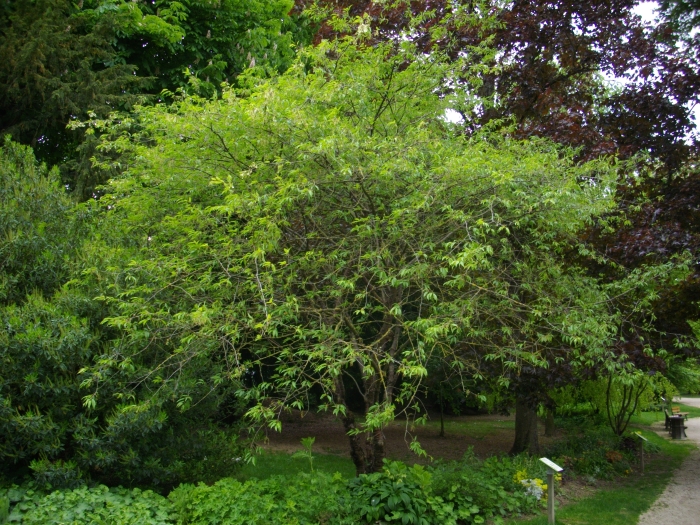Tibetan Cherry
(Prunus serrula)
Tibetan Cherry (Prunus serrula)
/
/

Fab5669
CC BY-SA 3.0
























Estimated Native Range
Summary
The Tibetan Cherry is valued for its year-round beauty, including its bark, which provides winter interest, and its white spring flowers. It is used in cultivation for ornamental purposes in urban settings, residential gardens, and parks. It thrives in full sun to part shade and prefers well-drained soils with a wide pH range, making it adaptable to various garden conditions. It is hardy in USDA zones 5 to 8. While it is generally low-maintenance, it can be susceptible to diseases such as fire blight and powdery mildew, as well as pests like Japanese beetles. Gardeners should monitor for these potential problems to maintain the tree’s health and appearance.CC BY-SA 4.0
Plant Description
- Plant Type: Trees
- Height: 20-30 feet
- Width: 20-30 feet
- Growth Rate: Moderate
- Flower Color: Cream, White
- Flowering Season: Spring
- Leaf Retention: Deciduous
Growth Requirements
- Sun: Full Sun, Part Shade
- Water: Medium
- Drainage: Medium
Common Uses
Bee Garden, Bird Garden, Border Plant, Butterfly Garden, Deer Resistant, Edible*Disclaimer: Easyscape's listed plant edibility is for informational use. Always verify the safety and proper identification of any plant before consumption., Fragrant, Rabbit Resistant, Showy Flowers, Street Planting
Natural Habitat
Forested hills and mountains of western China
Other Names
Common Names: Paperbark Cherry, Tibetan Cherry, Cellophane Bark Cherry, Redbark Cherry
Scientific Names: , Prunus serrula, Cerasus serrula, Prunus serrula var. tibetica, Prunus odontocalyx, Prunus serrulata f. sirotae, Prunus ×donarium f. sirotae, Prunus ×donarium f. wasinowo, Prunus cerasoides subsp. tibetica, Prunus puddum var. tibetica
GBIF Accepted Name: Prunus serrula Franch.